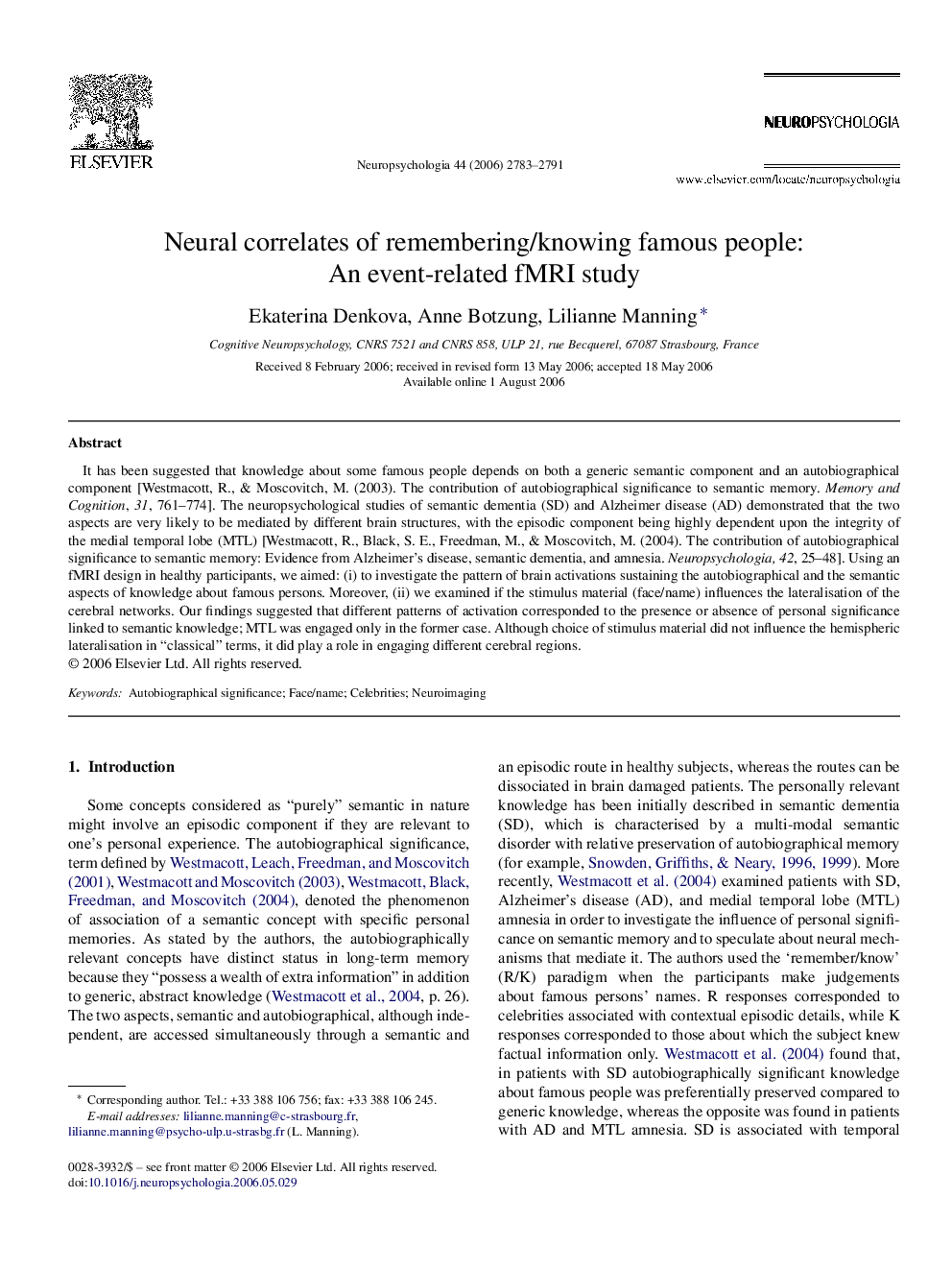| Article ID | Journal | Published Year | Pages | File Type |
|---|---|---|---|---|
| 945853 | Neuropsychologia | 2006 | 9 Pages |
It has been suggested that knowledge about some famous people depends on both a generic semantic component and an autobiographical component [Westmacott, R., & Moscovitch, M. (2003). The contribution of autobiographical significance to semantic memory. Memory and Cognition, 31, 761–774]. The neuropsychological studies of semantic dementia (SD) and Alzheimer disease (AD) demonstrated that the two aspects are very likely to be mediated by different brain structures, with the episodic component being highly dependent upon the integrity of the medial temporal lobe (MTL) [Westmacott, R., Black, S. E., Freedman, M., & Moscovitch, M. (2004). The contribution of autobiographical significance to semantic memory: Evidence from Alzheimer's disease, semantic dementia, and amnesia. Neuropsychologia, 42, 25–48]. Using an fMRI design in healthy participants, we aimed: (i) to investigate the pattern of brain activations sustaining the autobiographical and the semantic aspects of knowledge about famous persons. Moreover, (ii) we examined if the stimulus material (face/name) influences the lateralisation of the cerebral networks. Our findings suggested that different patterns of activation corresponded to the presence or absence of personal significance linked to semantic knowledge; MTL was engaged only in the former case. Although choice of stimulus material did not influence the hemispheric lateralisation in “classical” terms, it did play a role in engaging different cerebral regions.
